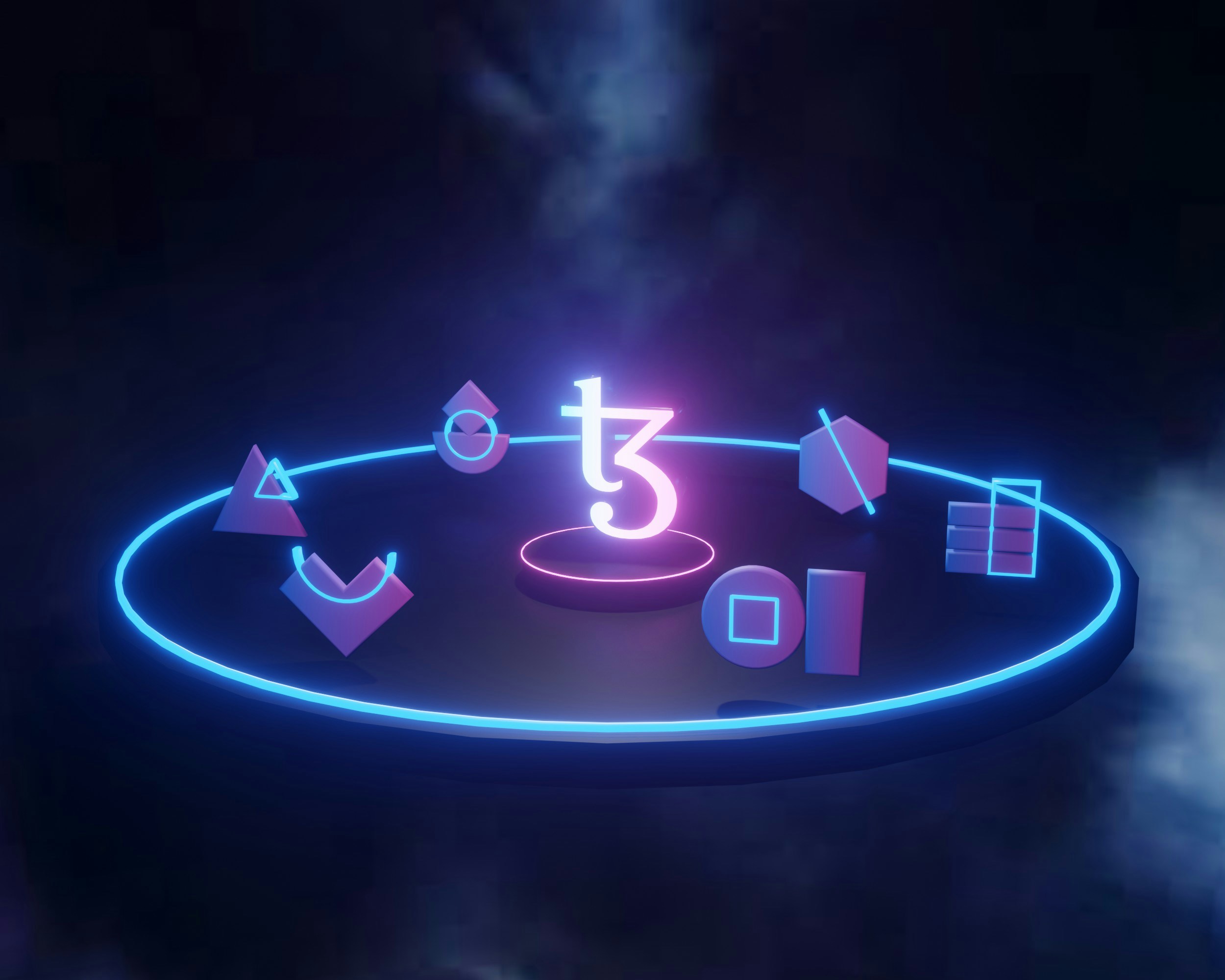Key Takeways
- Cryptocurrency transactions take place on a blockchain network and are validated by various consensus mechanisms like Proof of Work (PoW), Proof of Stake (PoS), Proof of History (PoH), etc.
- Decentralized apps (DApps) and decentralized exchanges (DEXs) are built on blockchain networks to execute transactions using smart contracts.
- One of the most widely used blockchains is Ethereum, which hosts many DApps and decentralized exchanges through smart contracts.
- A blockchain network provides decentralization, security, and scalability to DeFi applications. By understanding these three elements, the efficiency of a network can be evaluated.
- Many blockchain platforms have improved over time. For example, the Ethereum network now uses a PoS mechanism, which greatly reduces energy consumption. BNB Chain is increasing its block gas capacity and the number of validators to enhance network throughput and security for transactions.
- These networks provide resources and tools for developers to build DApps. For example, the Ethereum Virtual Machine (EVM) is used by developers to execute and deploy smart contracts and build DApps.
- These networks power most of today’s DeFi projects.
Blockchain’s Biggest Challenge: Solving the Trilemma for DeFi Growth
Despite the fact that Ethereum is the most popular blockchain with the largest user base and deep liquidity, many others like Avalanche and BNB Chain have emerged in the industry to compete with it. Avalanche can process up to 4,500 transactions per second, while Ethereum’s current mainnet processes around 15. The ability of a network to support an increasing load of transactions is known as scalability. However, as scalability increases, decentralization and security often decrease. Achieving optimal levels of all three elements—decentralization, security, and scalability—is very challenging, and this challenge is known as the blockchain trilemma.
The blockchain trilemma is a major issue that needs to be addressed for the crypto industry to thrive. Many solutions have been proposed, including improvements to consensus mechanisms, sharding, and sidechains. The Ethereum Merge update was a major step toward improving the sustainability and security of the Ethereum network, paving the way for future scalability upgrades, lower gas fees, and faster transactions. While the Merge itself did not directly increase transactions per second, it set the stage for future updates that could raise Ethereum’s TPS from around 30 to potentially 100,000 through technologies like sharding.
By addressing this trilemma, a network can be made more efficient for all cryptocurrency activity. In this article, we will discuss the following aspects of the top five blockchains and how they empower decentralized finance projects:
1. Scalability and security
2. Their native token
3. Becoming validators and earning rewards
1. Ethereum
It is the most popular decentralized blockchain platform that supports smart contracts for building DApps. The smart contracts operate through the EVM (Ethereum Virtual Machine) and the Solidity programming language, capable of handling complex financial logic. This has also enabled wide-scale interoperability across numerous Ethereum-powered DeFi platforms. Ethereum is powered by ETH, its native token and the world’s second-largest cryptocurrency, currently valued at around $4,180.
In 2022, Ethereum changed its consensus mechanism from PoW to PoS to significantly reduce energy consumption and improve network sustainability. While this change did not directly increase scalability, it laid the groundwork for future upgrades—such as sharding—which are expected to greatly enhance Ethereum’s capacity and throughput.
Since Ethereum’s current consensus mechanism is PoS, staking ETH is required to become a validator. Users must stake 32 ETH to activate validator software. Validators are responsible for processing transactions and proposing or attesting to new blocks, for which they earn rewards in ETH. There are three main forms of Ethereum staking, each offering different levels of control and rewards:
- Solo staking – Running your own Ethereum node and depositing 32 ETH to activate a validator.
- Staking as a service – You deposit 32 ETH while a third-party node operator manages the validator’s technical operations.
- Pooled staking – Depositing a smaller amount of ETH into a staking pool with others, collectively reaching the 32 ETH requirement to run a validator. Rewards are shared among participants.
Learn more about Ethereum staking in detail.
2. BNB chain
BNB Chain is a popular community-driven blockchain ecosystem developed by Binance, created by integrating Binance Chain (launched in 2019) and Binance Smart Chain (BSC). Binance developed its own blockchain to enable users to trade, stake, and build DApps on a decentralized network, without relying solely on Binance’s centralized exchange services.
It is powered by BNB, the network’s native coin, which is also used on the Binance exchange to pay transaction fees and access various financial services. BNB Chain is considered an attractive platform for DeFi projects due to its high network speed, extremely low transaction fees, and strong interoperability. Key benefits for DeFi developers include:
- EVM-compatible smart contracts, allowing developers to use familiar Ethereum tools.
- Easy migration of DApps from other blockchains to BSC with minimal code changes.
- Proof of Staked Authority (PoSA) consensus mechanism, enabling faster block times and low gas fees.
- Developer support programs that provide funding, resources, and technical assistance.
In Q4 2022, BNB Chain also launched zkBNB, a Layer-2 scaling solution using zero-knowledge proofs to improve scalability and security while maintaining low transaction costs.
BNB Chain’s PoSA mechanism validates transactions through a limited set of validators. Currently, 41 active validators secure the blockchain and earn rewards in BNB tokens. To become a validator, the following steps must be completed:
- Have hardware that meets the required specifications.
- Run a full BSC node.
- Stake a minimum of 10,000 BNB.
Validators are selected based on their voting power, and those with the highest voting power are chosen to participate in block production and transaction validation.
3. Avalanche
It is a high-performance decentralized blockchain platform launched in 2020 by Ava Labs with the vision of providing high throughput, low latency, and near-instant finality for decentralized applications (including DeFi). Instead of using traditional PoW or PoS alone, it employs the Avalanche consensus protocol—a variation of Proof of Stake—which achieves a high degree of decentralization without sacrificing scalability. Its native token, AVAX, is used to pay transaction fees, participate in governance, and for staking.
Avalanche’s standout feature is its multi-chain architecture, consisting of three built-in blockchains:
- X-Chain (Exchange Chain) – Optimized for creating and transferring digital assets.
- C-Chain (Contract Chain) – Fully EVM-compatible, enabling developers to deploy and interact with Ethereum-based smart contracts using familiar tools like the Solidity language and MetaMask.
- P-Chain (Platform Chain) – Manages validators, coordinates staking, and enables the creation of custom blockchains called subnets.
Unique abilities for smart contracts on Avalanche include:
- EVM compatibility – Developers can deploy Ethereum smart contracts without rewriting code.
- Subnet creation – Projects can launch their own dedicated, customizable blockchains with specific rules, validators, and tokenomics while still benefiting from Avalanche’s security infrastructure.
- High throughput and low fees – Supports large-scale DeFi, gaming, and enterprise applications without congestion issues.
- Instant finality – Transactions are confirmed and irreversible in under two seconds, reducing settlement risk.
- Customizable virtual machines – Developers are not limited to the EVM; they can build smart contracts in alternative VMs tailored to specific use cases.
This architecture allows Avalanche to specialize each chain for a specific purpose, improving efficiency and scalability. Subnets play a key role in scalability by enabling parallel blockchains, each with its own validator set.
To become a validator on Avalanche, a user must stake a minimum of 2,000 AVAX. Alternatively, users can delegate as little as 25 AVAX to an existing validator. Validators earn staking rewards—currently up to around 11% APY—and the hardware requirements are relatively low compared to many other blockchains.
4. Cardano
It is a PoS (Proof-of-Stake) blockchain platform with smart contract functionality, launched in 2017 by Input Output Global (IOG). Smart contract functionality was added in 2021 through the Alonzo upgrade, with Plutus being its native programming language for the deployment of DApps. Developed with the vision of providing a sustainable and scalable blockchain ecosystem, Cardano implements a layered architecture:
- Cardano Settlement Layer (CSL) – Handles ADA transactions and ledger balances.
- Cardano Computation Layer (CCL) – Processes smart contracts and decentralized applications (DeFi).
The blockchain is powered by ADA, which is also used for governance, staking, and paying transaction fees, enabling users to actively participate in the ecosystem. As an open-source project, Cardano allows users to become stake pool operators or stake delegators and earn rewards.
Unique abilities for smart contracts on Cardano include:
- Formal verification – Ensures contract code is mathematically correct, reducing vulnerabilities.
- Native tokens without smart contracts – Developers can create and manage custom tokens directly on the ledger without writing complex code.
- EUTXO model – Cardano’s Extended Unspent Transaction Output model enhances scalability and predictability of transaction fees compared to Ethereum’s account-based model.
- High energy efficiency – Ouroboros uses a fraction of the energy consumed by PoW blockchains.
- Interoperability focus – Designed to connect with other blockchains and traditional financial systems.
Cardano uses the Ouroboros proof-of-stake protocol to maintain scalability and strong security. It works by dividing the blockchain into epochs, which are further split into time slots. For each slot, a leader (validator) is randomly selected (weighted by stake) to add a block to the chain and propagate it to the next leader.
To become a validator (stake pool operator), users must run a node, register a stake pool, and pledge ADA to it. The more stake a pool has—both from the operator and delegators—the higher its chance of being selected as a slot leader and producing blocks, which generates rewards for all participants proportionally.
5. Solana
It is a well-known blockchain platform launched in 2020 by Solana Labs, designed to provide extremely fast transaction speeds for crypto transactions without sacrificing decentralization. It achieves this by combining a unique Proof of History (PoH) mechanism with Proof of Stake (PoS), enabling the network to process thousands of transactions per second with sub-second finality.
This architecture allows developers to create highly scalable and user-friendly applications.
Unique abilities for smart contracts on Solana include:
- High throughput – Capable of handling up to 65,000 transactions per second under optimal conditions.
- Low transaction costs – Average transaction fees are a fraction of a cent, making it cost-effective for high-volume applications.
- Parallel transaction processing – Solana’s runtime, Sealevel, allows thousands of smart contracts to run in parallel across different accounts.
- Rust, C, and C++ programming support – Smart contracts (called programs on Solana) can be written in multiple languages, with Rust being the most common for performance and security.
- Instant confirmation – Finality is typically achieved in 400–500 milliseconds, enabling near-real-time settlement.
Solana uses a hybrid consensus model:
- Proof of History (PoH) – A cryptographic clock that timestamps transactions, allowing validators to agree on the order of events without needing extensive communication.
- Proof of Stake (PoS) – Validators stake SOL to participate in consensus and secure the network.
Solana can process around 50,000–65,000 TPS in ideal conditions and is considered one of the fastest blockchains in operation. Its high speed and low transaction costs make it a popular choice for building DApps, DeFi platforms, NFT marketplaces, and Web3 applications.
Its native token, SOL, is used to pay transaction fees, participate in governance, and secure the network through staking. In the PoH process, each transaction is assigned a cryptographic timestamp that proves the exact point in time it occurred, helping maintain order, security, and decentralization.
In order to become a validator on the Solana network, the following requirements must be met:
- High-performance hardware capable of running a Solana node reliably, with strong CPU, RAM, and high-bandwidth internet.
- No fixed minimum SOL requirement, but having more delegated stake increases the chances of being selected to produce blocks and earn rewards.
- Create four necessary accounts:
- System account
- Validator account
- Vote account
- Stake account
- Set up and run the validator node according to Solana’s official guidelines, and maintain continuous uptime to maximize rewards and reputation.
Concluding remarks
With the growing number of crypto users in areas such as decentralized finance (DeFi), game finance (GameFi), and NFT marketplaces, the load on blockchain networks continues to increase. To ensure scalability, many Layer-1 and Layer-2 blockchain solutions have been developed. As a result, blockchain platforms are evolving to enhance both security and decentralization, benefiting end users with faster and more secure transactions. At the same time, developers also gain from improved scalability and robust network security.
Most importantly, these blockchains are open-source and decentralized, allowing people to actively participate in their development or secure the network by becoming validators. This means these ecosystems are ever-evolving—through decentralization, which enables collective, community-driven innovation in blockchain technology.


